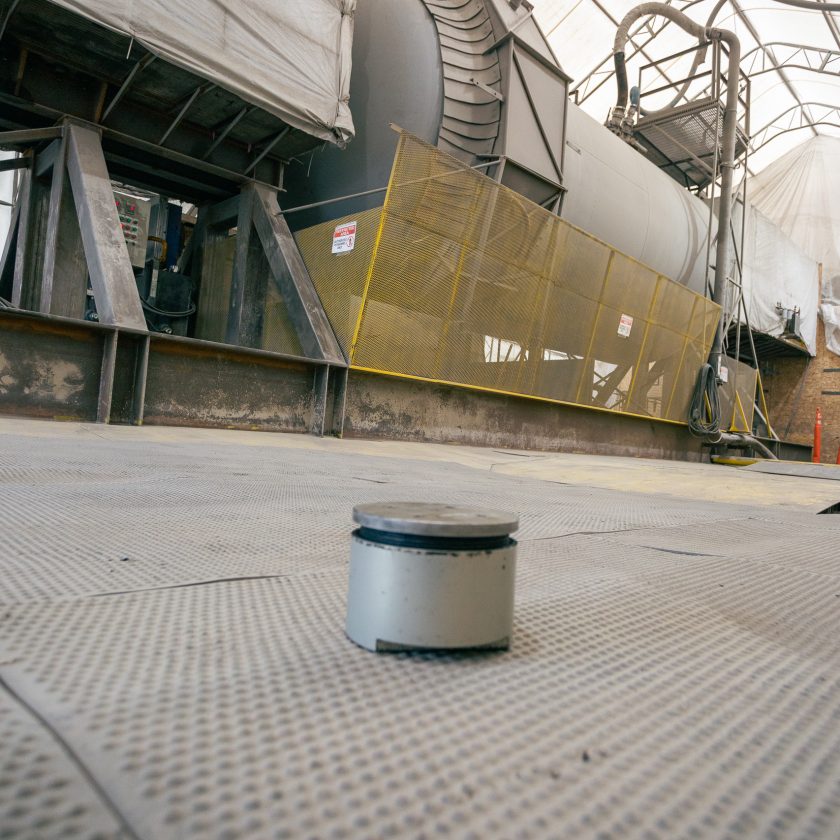Cement Association of Canada (CAC) President and CEO Michael McSweeney recently delivered remarks to House of Commons Standing Committee on Environment and Sustainable Development:
 |
| Michael McSweeney |
Good morning, Madam Chair and Members of the Committee. Thank you for the opportunity to address you today on what our industry considers one of the government’s most important files.
The cement and concrete industry contributes $73 billion in direct, indirect and induced economic impact and employs directly and indirectly over 151,000 Canadians.
Our industry supports strong action on climate change, including putting a price on carbon. As of this year, all but one cement facility in Canada operates in a province that has already priced carbon.
As governments have moved toward carbon pricing, they have had to consider the impact of carbon pricing on the competitiveness of Energy Intensive Trade Exposed sectors. Cement is among Canada’s most exposed sectors, uniquely vulnerable to its competitors in import and export markets that don’t have similar carbon pricing systems.
Thankfully, with the exception of British Columbia, carbon pricing systems across Canada, including the forthcoming Federal Backstop Carbon Pricing System, on the whole strike the right balance between incentivizing emissions reductions, while introducing other measures to protect and even enhance Canadian industry competitiveness as we transition a low carbon economy.
Why are carbon pricing and EITEs important to a discussion about climate change and the built environment? Because while well-designed carbon pricing systems can foster low-carbon innovation in the industries that support Canada’s built environment, these innovations cannot flourish in a policy environment that does not actively pull them into built environment decision-making.
Consider that, on aggregate, all three levels of government purchase directly and indirectly some 60 percent of all building materials consumed in Canada – concrete making up the majority of those materials. Now consider:
1. Our building and energy codes are minimum codes, not the gold standard many Canadians believe them to be, and unless significantly changed, will serve to impede low-carbon innovation, not accelerate it;
2. Procurement decisions made by governments in general emphasize lowest cost tenders and only rarely consider GHGs or even climate adaptation;
3. When governments have considered climate change in the built environment, they have done so with prescriptive policies – for example, policies like “wood first” – rather than leveraging the market toward comprehensive and systemic Clean Growth innovation.
Let me offer an example. Our sector recently came together to promote a new cement, Portland limestone cement, as an opportunity to reduce GHGs from concrete. PLC reduces the GHG footprint of concrete by 10 percent. If adopted as a full replacement for all cement sold in Canada, Contempra could yield annual CO2 reductions of almost one megatonne, at no additional cost. While PLC meets the same performance standards as general-use cement, has been used in Europe for decades and is recognized in the 2010 National Building Code of Canada, it does not enjoy deep market adoption. This is because the construction industry, codes and standards bodies and the public procurement agencies responsible for planning and commissioning infrastructure projects do not yet value or incentivize new innovations in low-carbon construction materials and design.
Governments as purchasers of more than half of all concrete produced in Canada, with the stroke of a pen, could make PLC the default cement in the majority of all projects across Canada. And yet our industry’s efforts to make this happen are inexplicably rebuffed. With this one innovation, we can address about 2 percent of the emissions gap that this government has identified Canada needs to fill to realize its 2030 target.
Pavement infrastructure offers another important example. Robust third-party lifecycle assessments irrefutably demonstrate the cost and climate benefits of concrete pavements over asphalt pavements – they last longer (40 to 50 years), cost less over their life and can improve fuel efficiency by up to 7 percent. These properties result in a savings of up to 12,000 tonnes of GHGs per lane-km, over a 50-year lifespan compared to a comparable asphalt road.
Contrast these two examples with the incessant political interventions in building codes across Canada, and the hundreds of millions of dollars federal and provincial governments have poured into championing “wood products,” and specifically tall woodframe buildings, as a significant carbon mitigation strategy and you can see where our exasperation lies.
The implications of such policies on the built environment, including for the prospect of a robust open and competitive market-driven clean growth strategy for buildings and building materials, are profound. Yet the underlying assumption that wood buildings yield a net carbon benefit over alternatives has never been fully articulated, let alone subject to comprehensive peer review. This is all the more troubling considering the increasingly well-documented shortcomings with the current understanding of the carbon profile of wood products.
Research on the GHG impacts of commercial logging suggests its effect on the carbon profile of wood products is significant. A Bureau of Land Management Report in western Oregon proposes that when the land use change GHG impacts of deforestation are taken into account (even accounting for regrowth), some 13 tonnes of GHGs are lost to the atmosphere for every tonne sequestered in a wood product. This is a far cry from the carbon neutrality claimed by the wood industry and Federal and Provincial Natural Resource Ministries.
You can therefore understand our frustration when we saw in Budget 2017 that this government is spending some $40 million to support preferential treatment of wood building materials, at the expense of other building materials. Or that Bill C-354 has passed second reading, attempting to tilt the playing field toward wood in government infrastructure, despite a growing body of evidence that this in fact may increase GHG emissions and make our buildings more vulnerable to climate change.
In Canada, the most significant carbon impacts from buildings relate to heating and cooling. These operational energy needs account for on average over 90 percent of the global warming potential for buildings. Even if the claims that wood is carbon neutral were true, the impact the substitution of wood for steel or concrete would have on the lifecycle emissions of a structure would be marginal. In fact, concrete’s thermal mass can play a significant role in helping to reduce GHGs by reducing operational demands.
Today, strategic use of thermal mass has reduced the operational energy needs of large commercial buildings like Manitoba Hydro Place by over 70 percent. With stronger building and energy codes, concrete could play a significant role in affordable strategies to meet the much sought-after net-zero building target. Only a robust cradle-to-cradle lifecycle cost and lifecycle climate change assessment can draw out these GHG and cost saving performance attributes. Policies that favor one building material over another, without considering the whole, are not in the public interest.
More exciting, but less understood, is the role that concrete will play in the emerging and game-changing class of technologies known as CO2 Utilization. Concrete is a critical source and sink for captured carbon. By virtue of the sheer volume of concrete consumed every year – more than any other material on earth with the exception of water – our sector will be pivotal in developing, scaling and commercializing CO2U technologies. A recent report by CO2 Sciences found that CO2U could provide $1.1 trillion in new market value, and reduce global greenhouse gas emissions by 15 percent, by the year 2030. In the concrete industry, these technologies have the potential to usher carbon neutral or even carbon positive concrete into the market in Canada and globally, avoiding some 11 megatonnes of CO2 in Canada alone and creating countless jobs and investments in the country.
Canada’s Clean Growth strategy for the built environment must look to the future it wants – a low carbon, climate resilient future – and make space for the transformative innovations needed to get there.
Let me be clear, we are not asking that governments mandate concrete roads or buildings. Nor are we disparaging competition from other building materials. We are simply asking government to take a sector-neutral approach to planning and using tools that focus on reducing GHGs as we transition to a low-carbon and climate-resilient economy.
We believe that the federal government should mandate the use of lifecycle cost analysis and lifecycle environmental assessment for all federally funded infrastructure projects, including investments channeled through the provinces and municipalities. By using lifecycle approaches for all infrastructure decisions, the federal government will be able to understand and optimize opportunities to build infrastructure at the least cost over its lifetime, while at the same time invest in infrastructure that produces the lowest carbon footprint. Most importantly, these tools help apply a level of data and science-driven discipline to decisions that demand robust, transparent and long-term thinking that will ultimately protect the taxpayer’s investment.
In conclusion, our primary ask is that you recommend that the Government of Canada mandate the use of full lifecycle and environmental assessments for all federally funded infrastructure projects at all three levels of government.




